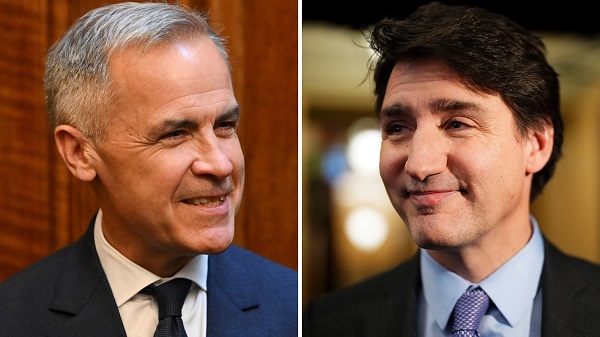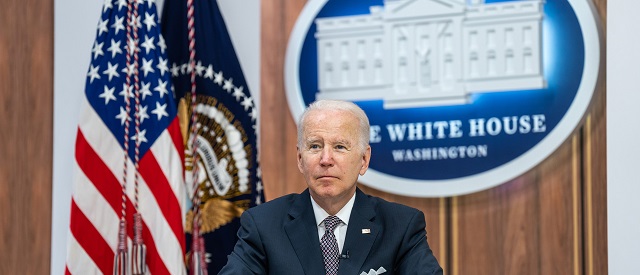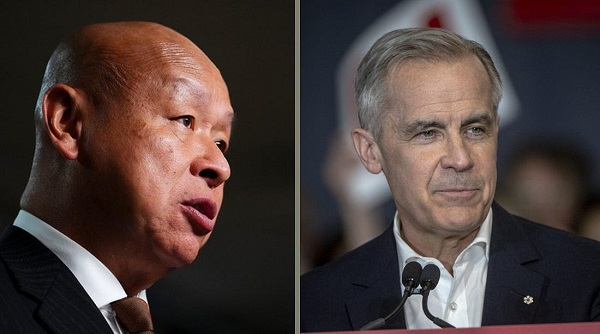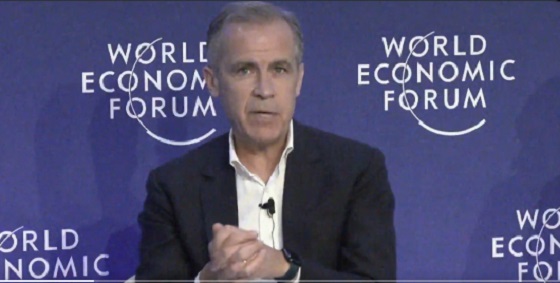Business
Federal government’s capital gains tax hike is worse than you think

From the Fraser Institute
By Jake Fuss and Grady Munro
Following the recent plunge in Canadian and U.S. stock markets, many Canadians likely saw a sharp decline in the value of their investments. Yet as Canadians reckon with this sudden change, other factors help reduce the return on their investments—namely, higher capital gains taxes.
When an investor sells a capital asset (i.e. stocks) for a higher price than they originally bought it, they realize a capital gain. Prior to this year, investors would pay tax on 50 per cent of any gain (based on their highest marginal personal income tax rate), but the Trudeau government recently increased that inclusion rate to 66.7 per cent for capital gains above $250,000.
This increase will cause economic damage and increase taxes for many middle-class Canadians—despite being framed by the government as a tax increase on the wealthy. And the effect is even more harmful than it first appears because capital gains taxes don’t adjust for inflation.
Inflation, the general rise in the prices of goods and services in the economy, erodes the purchasing power of money. For example, if a basket of goods costs $100 in Year 1, and annual inflation is 4 per cent, that exact same basket would cost $104 in Year 2. The Bank of Canada maintains a target inflation rate of 2 per cent per year, but in recent years the rate has well-exceeded that target.
From 2021 to 2023, Canada experienced an average annual inflation rate of 4.7 per cent. And though inflation is easing and fell to 2.5 per cent last month, by the end of this year prices are still expected to be 17.5 per cent higher than they were in 2020. For comparison, prices increased 6.7 per cent from 2016 to 2020.
While inflation erodes the purchasing power of one dollar, it also erodes the returns people receive from their investments. If an asset increases in value by 5 per cent over one year, but inflation is 4 per cent, the asset’s real value has increased by just 1 percentage point. In other words, of the total 5 per cent gain, 4 percentage points are the “inflationary” gain while 1 percentage point is the “real” gain.
Which takes us back to the Trudeau government’s tax hike on capital gains. Unlike income thresholds for federal personal income taxes, which are adjusted to account for inflation, capital gains taxes don’t distinguish between “inflationary” and “real” gains. Therefore, even if a realized capital gain is solely inflationary—meaning there’s no increase in real wealth—the federal government will still levy the same amount of tax as it would if there was no inflation at all.
This is what’s happening right now. After years of high inflation, inflationary gains represent a significant share of the capital gains Canadians are currently realizing. For example, from the beginning of 2020 to the end of 2023, the S&P/TSX Composite Index (Canada’s benchmark stock market index) increased 22.6 per cent. However, after adjusting for inflation (a cumulative 14.7 per cent), that 22.6 per cent represents a real gain of less than 8.0 per cent. As such, a large portion of revenue the Trudeau government expects to generate from raising capital gains taxes will originate from inflationary gains rather than actual increases in asset values.
As Canadians struggle with a weak economy, the Trudeau government’s recent capital gains tax hike will only add to the problem. But after years of high inflation, the effect is even worse than you might think.
Authors:
2025 Federal Election
Alcohol tax and MP pay hike tomorrow (April 1)

The Canadian Taxpayers Federation is calling on all party leaders to stop a pair of bad policies that are scheduled to happen automatically on April 1: pay raises for members Parliament and another alcohol tax increase.
“Party leaders owe taxpayers answers to these two questions: Why do you think you deserve a pay raise and why should Canadians pay higher taxes on beer and wine?” said Franco Terrazzano, CTF Federal Director. “Politicians don’t deserve a raise while millions of Canadians are struggling.
“And the last thing Canadians need is another tax hike when they pour a cold one or uncork a bottle with that special someone.”
MPs give themselves pay raises each year on April 1, based on the average annual increase in union contracts with corporations with 500 or more employees.
The CTF estimates tomorrow’s pay raise will amount to an extra $6,200 for backbench MPs, $9,200 for ministers and $12,400 for the prime minister, based on contract data published by the federal government.
After tomorrow’s pay raise, backbench MPs will receive a $209,300 annual salary, according to CTF estimates. A minister will collect $309,100 and the prime minister will take home $418,600.
Meanwhile, the alcohol escalator automatically increases excise taxes on beer, wine and spirits every year on April 1, without a vote in Parliament. Alcohol taxes will increase by two per cent tomorrow, costing taxpayers about $40 million this year, according to Beer Canada estimates.
The alcohol escalator tax has cost taxpayers more than $900 million since it was imposed in 2017, according to Beer Canada estimates.
“Politicians are padding their pockets on the same day they’re raising beer taxes and that’s wrong,” Terrazzano said. “If party leaders want to prove they care about taxpayers, they should stop the MP pay raises.
“And if party leaders care about giving Canadian brewers, distillers and wineries a fighting chance against tariffs, it’s time to stop hitting them with alcohol tax hikes year after year.”
The CTF released Leger polling showing 79 per cent of Canadians oppose tomorrow’s MP pay raise.
2025 Federal Election
Poilievre To Create ‘Canada First’ National Energy Corridor

From Conservative Party Communications
Poilievre will create the ‘Canada First’ National Energy Corridor to rapidly approve & build the infrastructure we need to end our energy dependence on America so we can stand up to Trump from a position of strength.
Conservative Leader Pierre Poilievre announced today he will create a ‘Canada First’ National Energy Corridor to fast-track approvals for transmission lines, railways, pipelines, and other critical infrastructure across Canada in a pre-approved transport corridor entirely within Canada, transporting our resources within Canada and to the world while bypassing the United States. It will bring billions of dollars of new investment into Canada’s economy, create powerful paycheques for Canadian workers, and restore our economic independence.
“After the Lost Liberal decade, Canada is poorer, weaker, and more dependent on the United States than ever before,” said Poilievre. “My ‘Canada First National Energy Corridor’ will enable us to quickly build the infrastructure we need to strengthen our country so we can stand on our own two feet and stand up to the Americans.”
In the corridor, all levels of government will provide legally binding commitments to approve projects. This means investors will no longer face the endless regulatory limbo that has made Canadians poorer. First Nations will be involved from the outset, ensuring that economic benefits flow directly to them and that their approval is secured before any money is spent.
Between 2015 and 2020, Canada cancelled 16 major energy projects, resulting in a $176 billion hit to our economy. The Liberals killed the Energy East pipeline and passed Bill C-69, the “No-New-Pipelines” law, which makes it all but impossible to build the pipelines and energy infrastructure we need to strengthen the Canadian economy. And now, the PBO projects that the ‘Carney cap’ on Canadian energy will reduce oil and gas production by nearly 5%, slash GDP by $20.5 billion annually, and eliminate 54,400 full-time jobs by 2032. An average mine opening lead time is now nearly 18 years—23% longer than Australia and 38% longer than the US. As a result of the Lost Liberal Decade, Canada now ranks 23rd in the World Bank’s Ease of Doing Business Index for 2024, a seven-place drop since 2015.
“In 2024, Canada exported 98% of its crude oil to the United States. This leaves us too dependent on the Americans,” said Poilievre. “Our Canada First National Energy Corridor will get us out from under America’s thumb and enable us to build the infrastructure we need to sell our natural resources to new markets, bring home jobs and dollars, and make us sovereign and self-reliant to stand up to Trump from a position of strength.”
Mark Carney’s economic advice to Justin Trudeau made Canada weaker while he and his rich friends made out like bandits. While he advised Trudeau to cancel Canadian energy projects, his own company spent billions on pipelines in South America and the Middle East. And unlike our competitors Australia and America, which work with builders to get projects approved, Mark Carney and Steven Guilbeault’s radical “keep-it-in-the-ground” ideology has blocked development, killed jobs, and left Canada dependent on foreign imports.
“The choice is clear: a fourth Liberal term that will keep our resources in the ground and keep us weak and vulnerable to Trump’s threats, or a strong new Conservative government that will approve projects, build an economic fortress, bring jobs and dollars home, and put Canada First—For a Change.”
-

 Business1 day ago
Business1 day agoDOGE discovered $330M in Small Business loans awarded to children under 11
-

 COVID-191 day ago
COVID-191 day ago17-year-old died after taking COVID shot, but Ontario judge denies his family’s liability claim
-

 2025 Federal Election1 day ago
2025 Federal Election1 day agoThe High Cost Of Continued Western Canadian Alienation
-

 Daily Caller1 day ago
Daily Caller1 day agoCover up of a Department of Energy Study Might Be The Biggest Stain On Biden Admin’s Legacy
-

 2025 Federal Election1 day ago
2025 Federal Election1 day ago2025 Federal Election Interference from China! Carney Pressed to Remove Liberal MP Over CCP Bounty Remark
-

 2025 Federal Election1 day ago
2025 Federal Election1 day ago2025 Election Interference – CCP Bounty on Conservative Candidate – Carney Says Nothing
-

 Business2 days ago
Business2 days agoCuba has lost 24% of it’s population to emigration in the last 4 years
-

 2025 Federal Election1 day ago
2025 Federal Election1 day agoPoilievre on 2025 Election Interference – Carney sill hasn’t fired Liberal MP in Chinese election interference scandal





